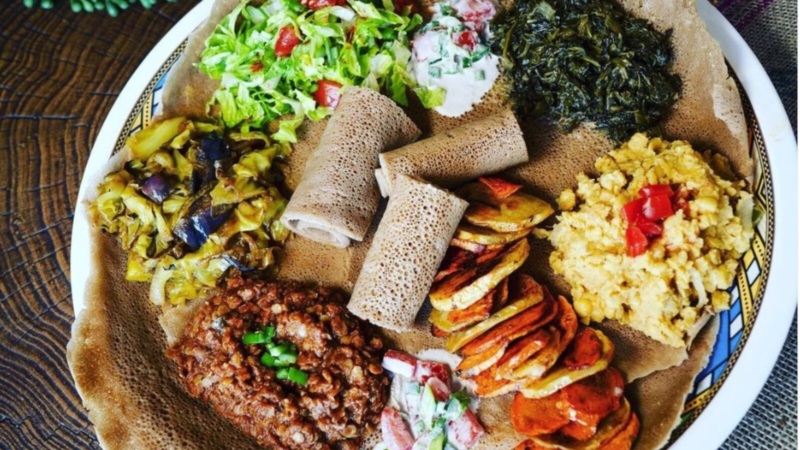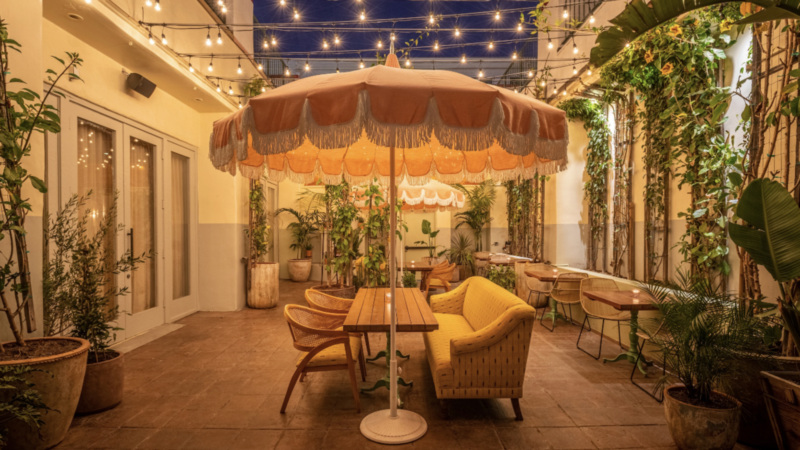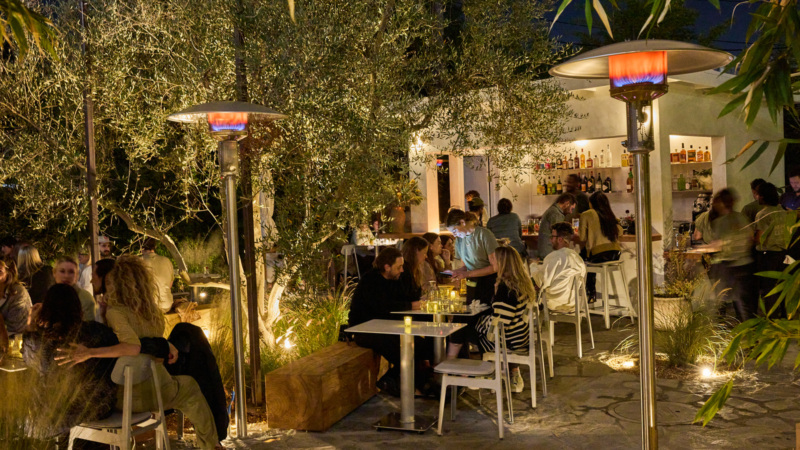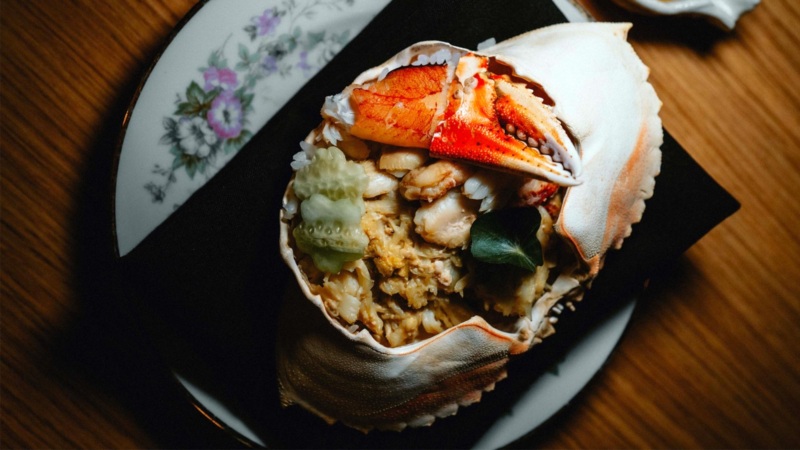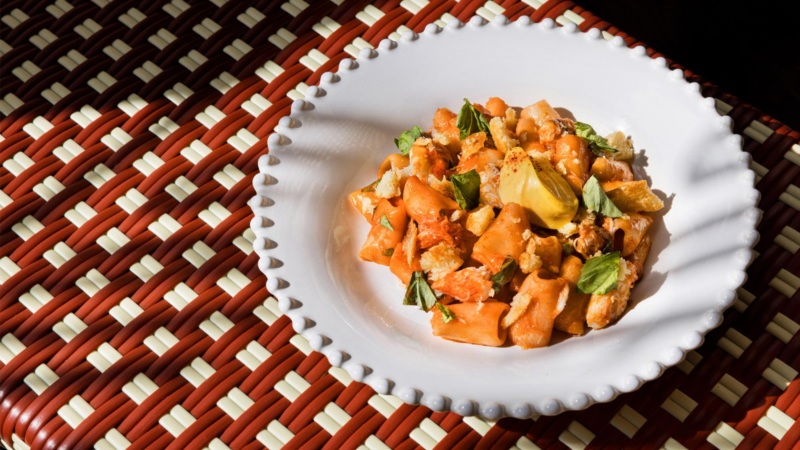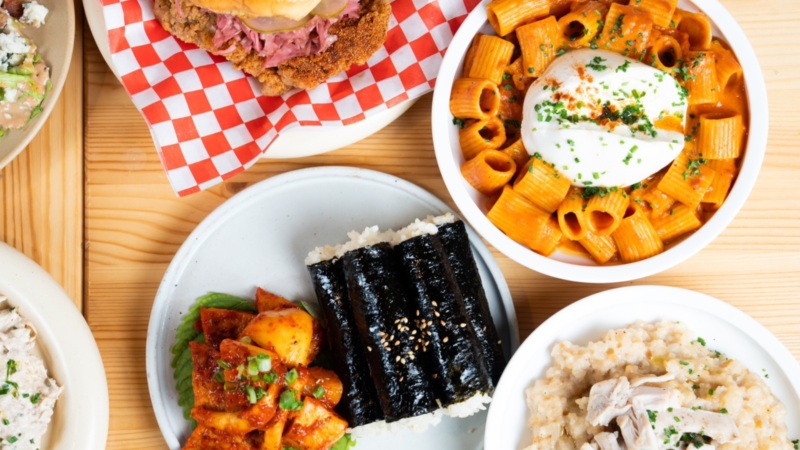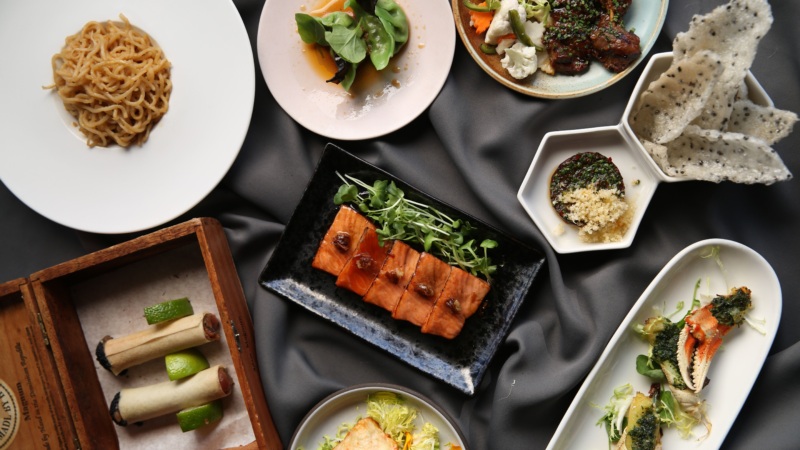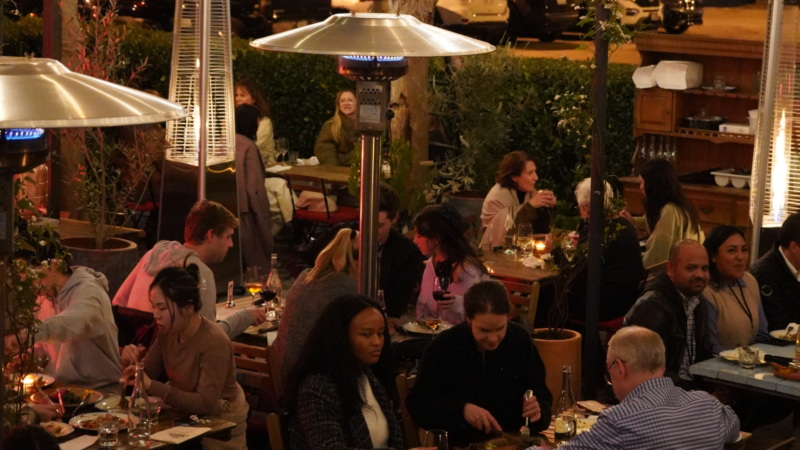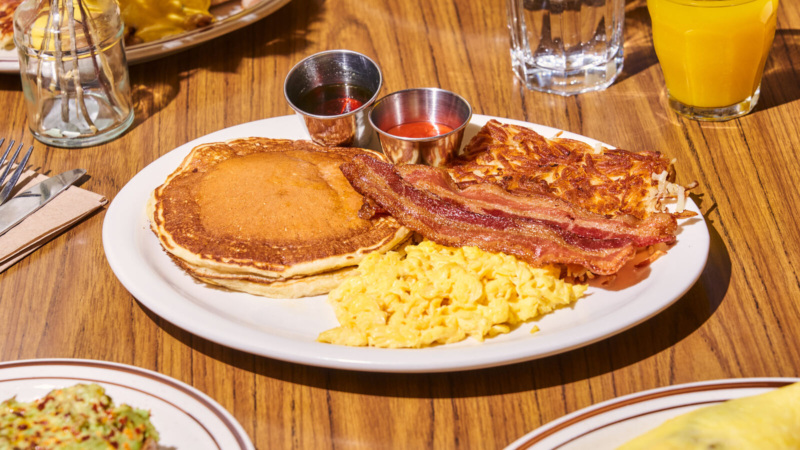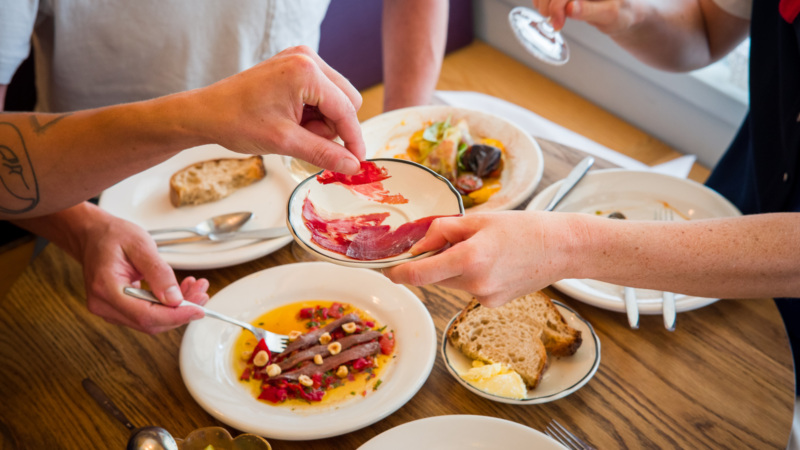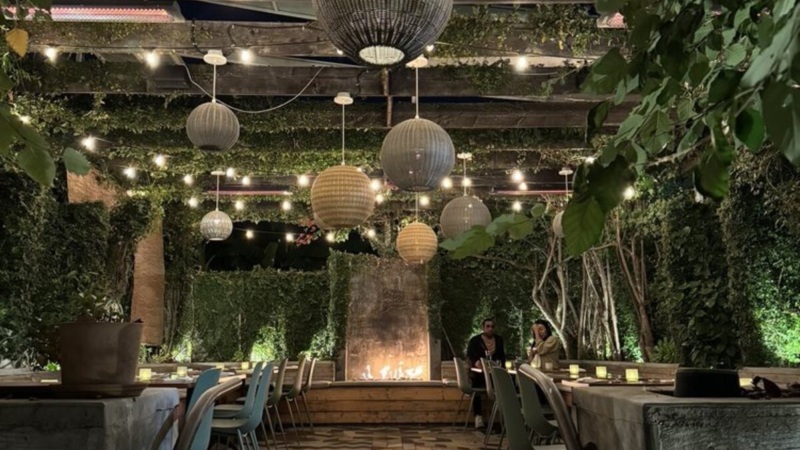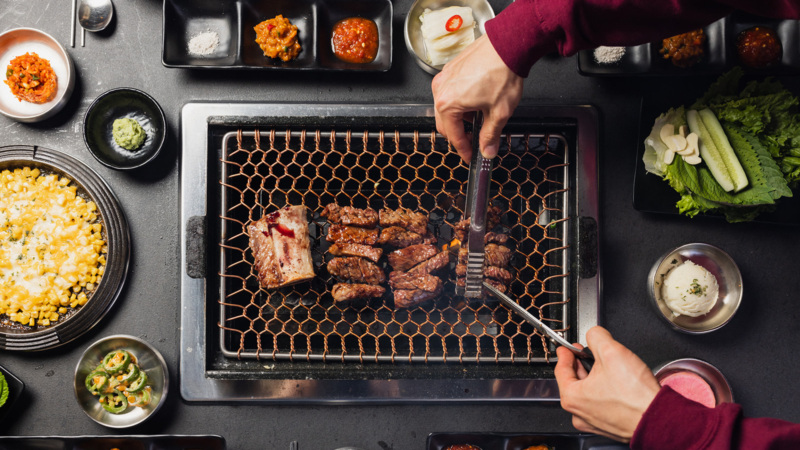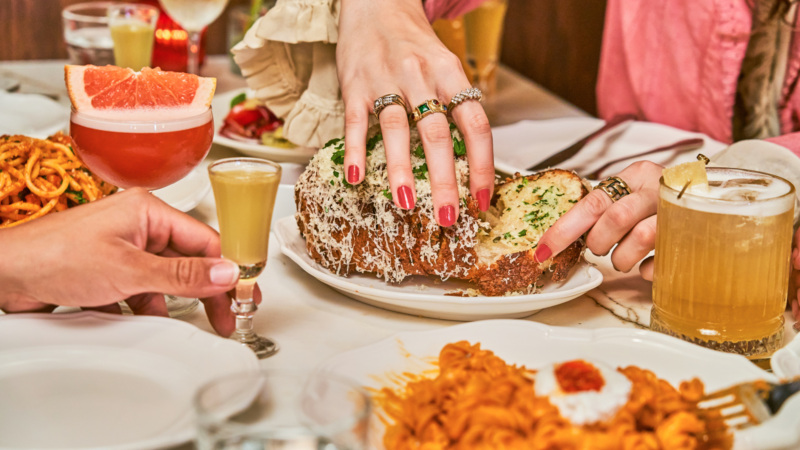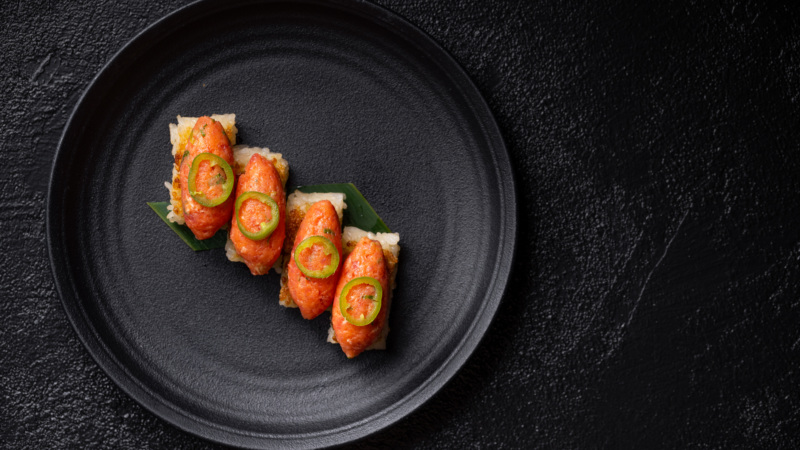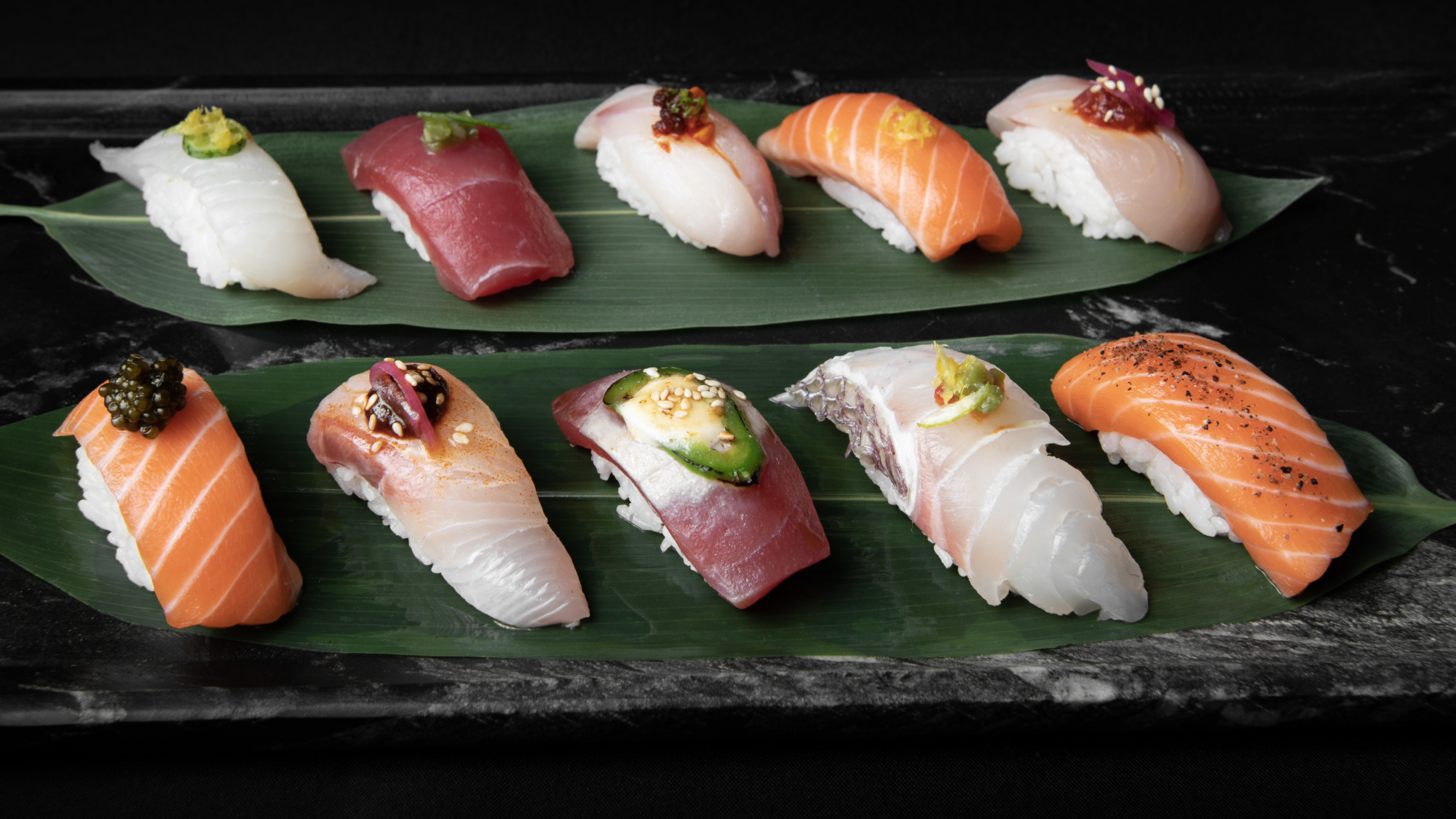
Everything You Need To Know About Fiish, Culver City’s New Sushi Spot
To make exceptional sushi, you first need to find exceptional fish. And as climate change continues ravaging the planet, that task becomes more complicated. Where do you go for a seafood spread without the guilt? Enter Fiish, a new sushi restaurant at Platform in Culver City, conceived around an eco-friendly ethos.
Partner Jamo Willis, chef Colin Whitbread, and executive chef Cody Requejo seek out top-shelf sustainable seafood, which they dry-age to draw out its flavors. Then, they add modern Angeleno elements — ancho chile paste, micro cilantro, smoked olive oil, plum salts, shiso mint — that don’t overpower the seafood, but might make you reconsider your preconceived notions about sushi. It’s a marriage of old-school precision and modern showmanship. Here’s everything you need to know before you go.
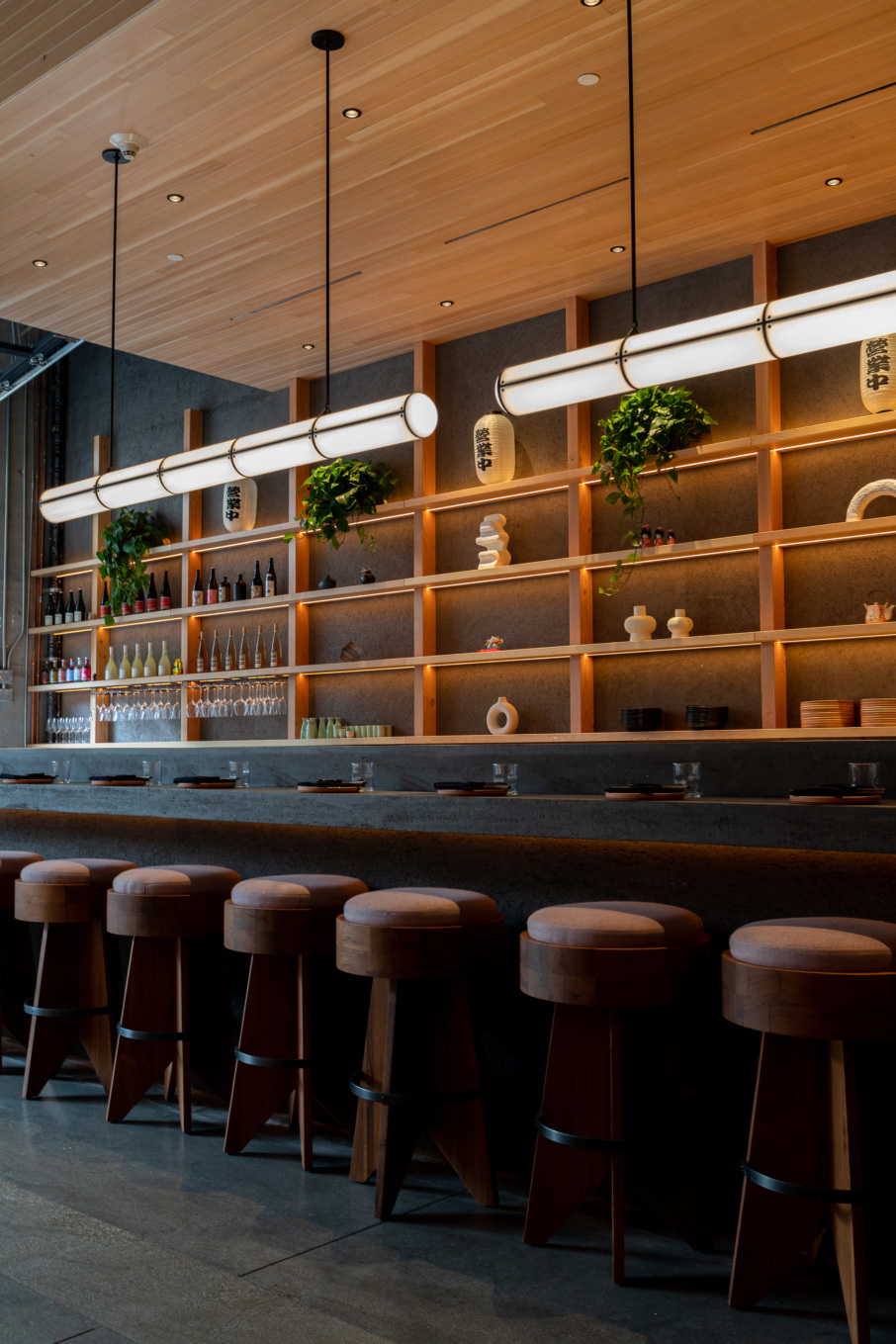
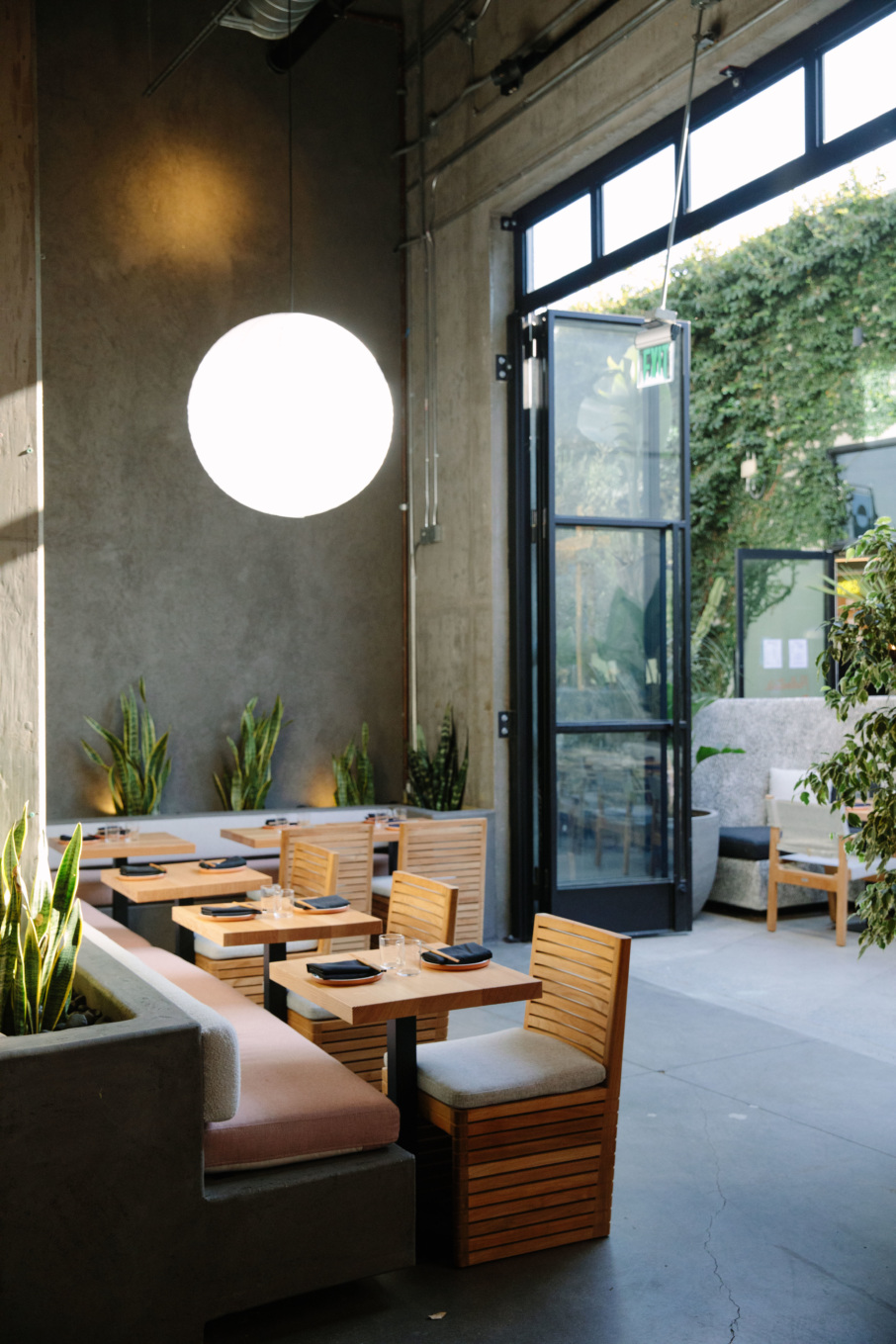
1. It has an uncommon origin story.
Colin Whitbread wandered into the sushi world from what you might call a backroad. Born and raised in San Diego County, he became an artist and an athlete, surfing semi-professionally for several years. Between stints on the road, he would return home and work in restaurants. “I learned sushi, or started practicing it, probably 20 years ago at a restaurant in Oceanside,” he says. He’s referring to the Fish Joint, where he worked under head chef Davin Waite, who’s known for his zero-waste approach to cooking.
Eventually, Whitbread made a name for himself as a private chef and earned a tidy living working high-end parties in Los Angeles, where his interest in sushi deepened. “Next to Tokyo, L.A. is one of the biggest sushi capitals in the world, because so many Japanese chefs came here in the late 1960s, ‘70s, and ‘80s. The clients I was feeding had really sophisticated sushi palates,” Whitbread says.
Going into 2020, Whitbread was on a roll. He was busy surfing, painting, and cooking. “Then when COVID hit, everything just changed,” he says. “Certain aspects of the food system completely evaporated. A lot of the small sushi spaces that were doing really high-end omakase shut down completely. It was a really humbling experience.” With event work drying up, Whitbread started preparing and delivering bento boxes while he considered next steps.
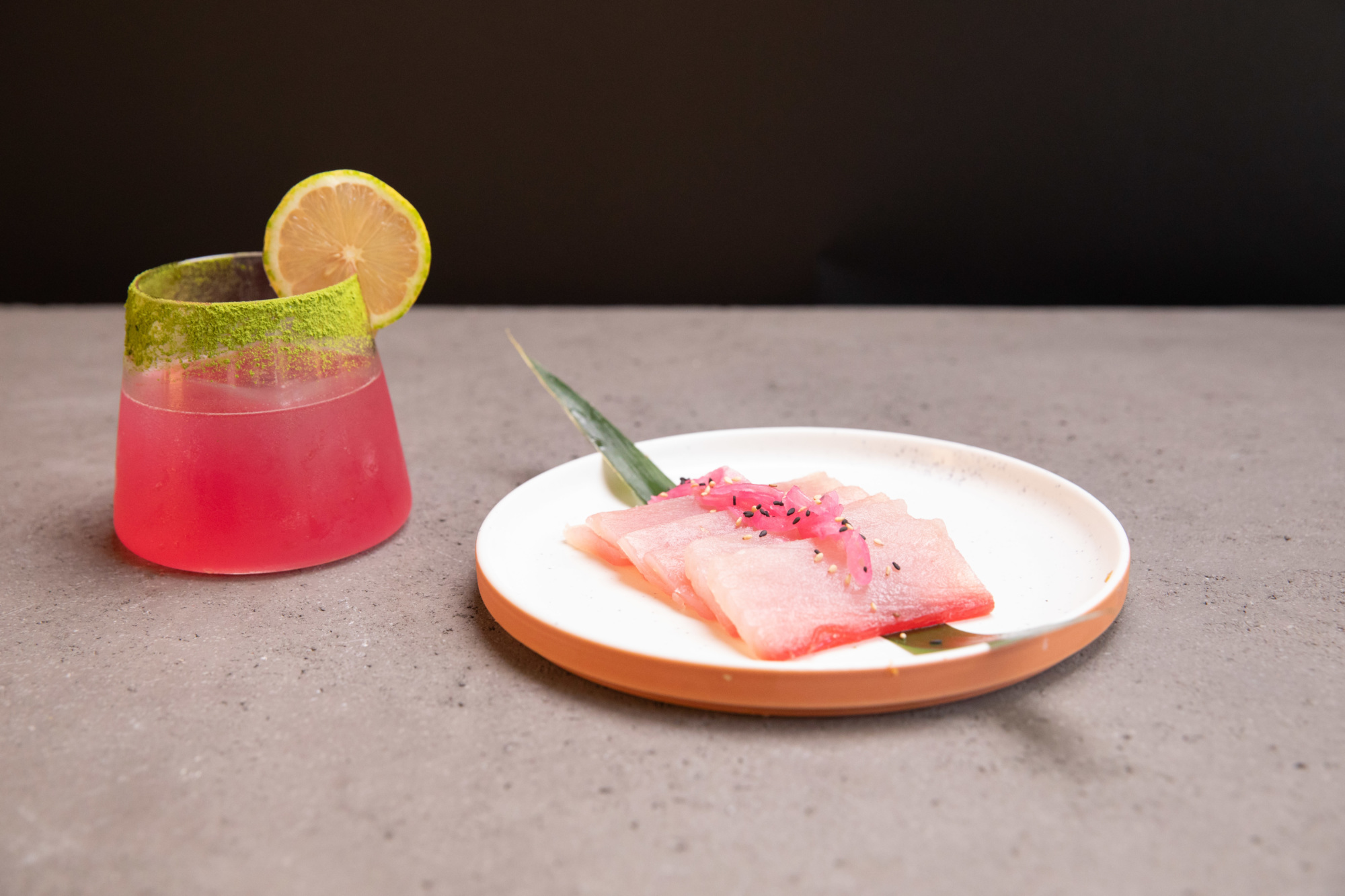
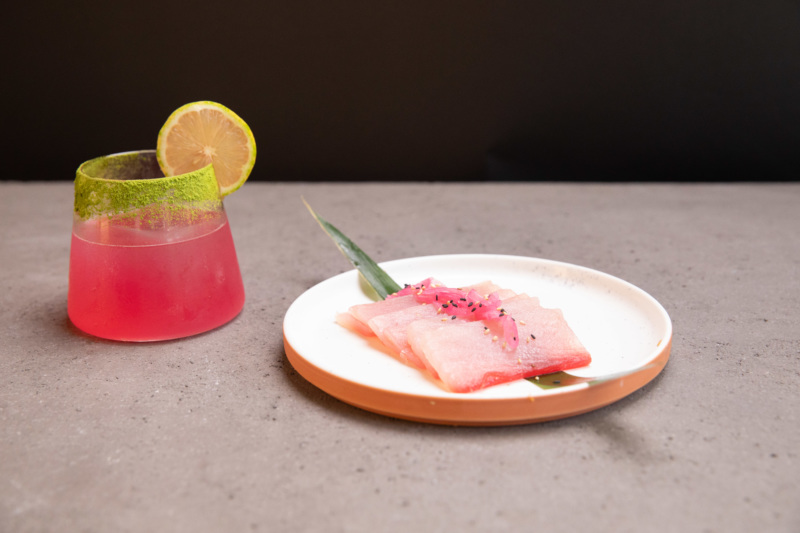
2. Sourcing is key.
“The word ‘sustainability’ is thrown around so easily nowadays,” Whitbread says, Whether it’s tuna from San Diego or striped bass from Baja California, “We go to great lengths to source the seafood in ways that aren’t harming the environment or fish stocks. We’re trying to make a point that this is what seafood in the future is going to look like,” Whitbread says.
Instead of relying on unstable supply chains, Whitbread and Requejo have developed their own, relying on farmed fish for 60-70% of Fiish’s menu and wild-caught for the rest. Whitbread says he went down a “rabbit hole” to find fish producers that met his quality standards and were BAP-certified (Best Aquaculture Practices).
He relies on Omega Blue Seafood in La Paz, Mexico for kanpachi and Pacifico Aquaculture off Todos Santos Island for striped bass. His favorite salmon is Ōra King from New Zealand. He might get halibut and rockfish from a fisherman he knows in San Francisco. During the summer, he buys tuna caught in San Diego. You won’t see eel on the menu, because Whitbread couldn’t find a sustainable producer. In its stead, he offers a miso eggplant roll with housemade vegan eel sauce.
The menu changes with the seasons and supply: “Some weeks, we don’t have striped bass. They didn’t make the quota for the harvest there so we go with a sustainable New Zealand snapper. And yellowtail has been heavily impacted this last couple years,” Whitbread says. “Your menu should change and reflect what’s going on in the season, especially with fish.”
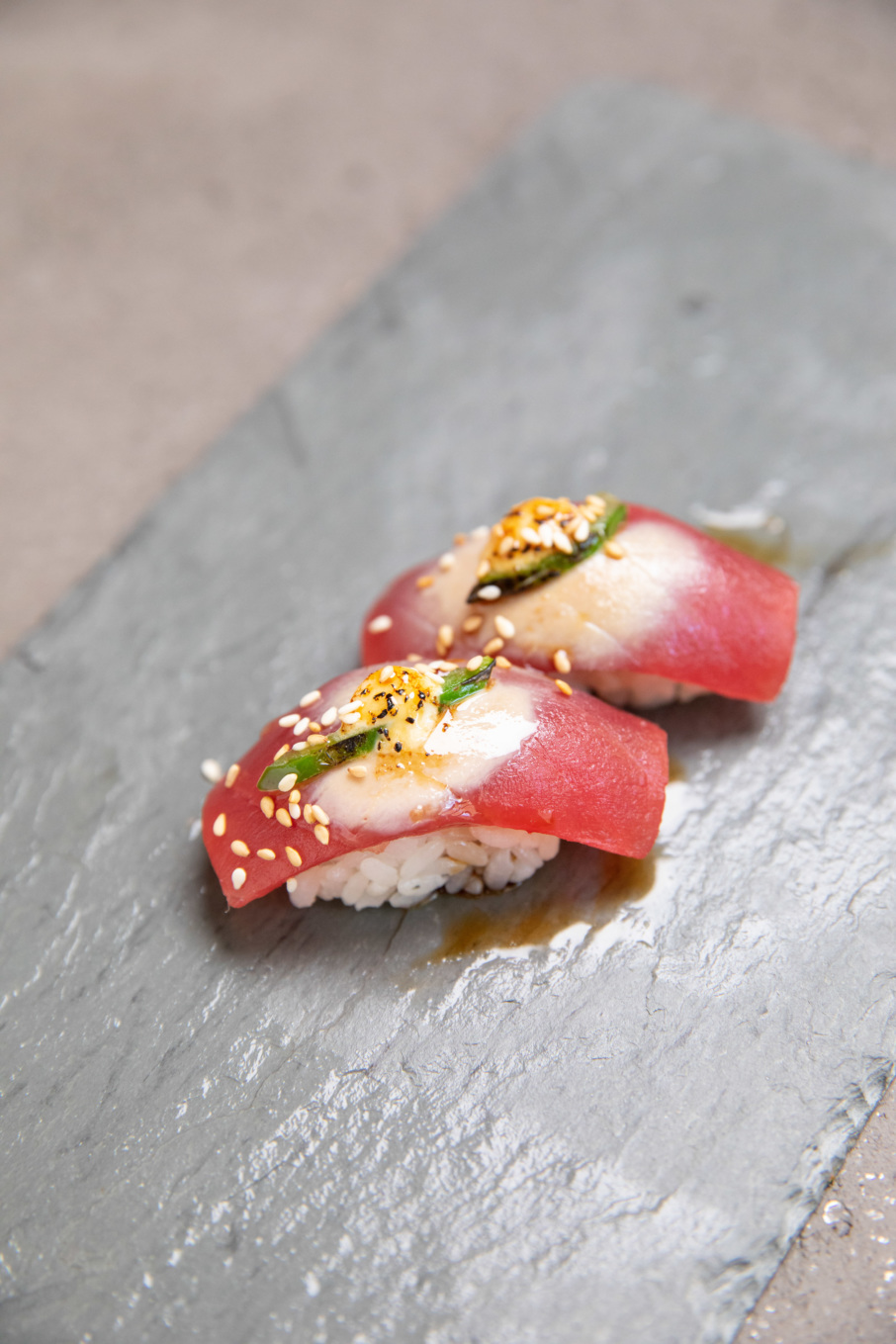

3. Dry-aging may be the future of fish.
Once they get their catch of the day, Whitbread and Requejo hang the fish in an industrial refrigerator that has been modified to improve the airflow. It’ll stay there anywhere from one to 10 days.
What does dry-aging fish accomplish? The same thing it does for steak. It pulls moisture out of the protein and replaces it with fats and oils, intensifying its flavor. Fiish isn’t the only place doing this. Gilberto Cetina at Holbox near USC has a dry-ager and The Joint in Sherman Oaks is famous for dry-aging its fish. This technique is also a practical way to keep fish fresh for longer.
“It enhances the flavor of the protein and it’s right in line with our desire to limit our waste. We can take as much [fish] as we want per day, put back what we’re not using, and it’s going to be even better tomorrow,” Whitbread says. “In the next 10 years, you’re going to see everybody dry-aging fish.”
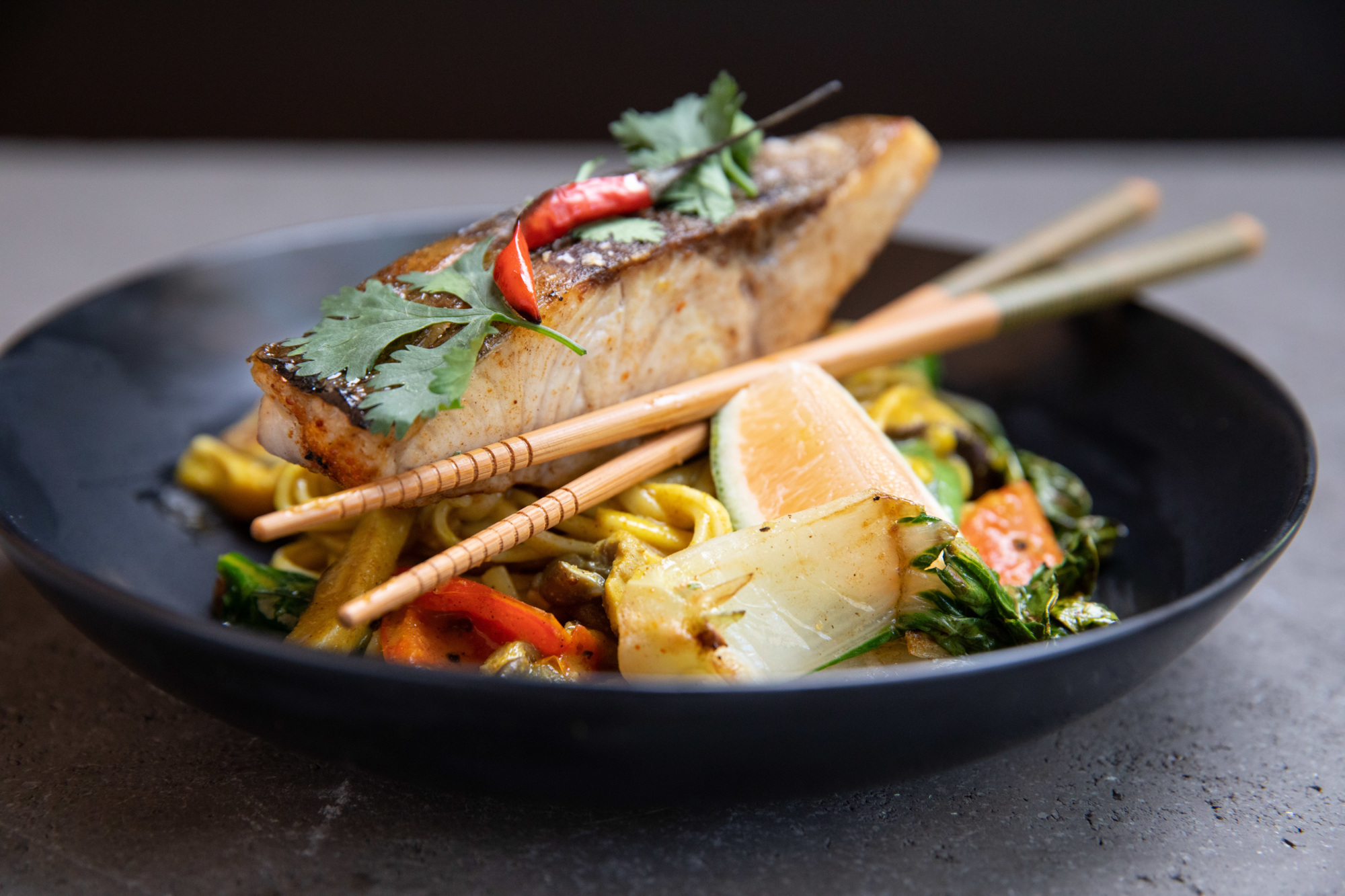
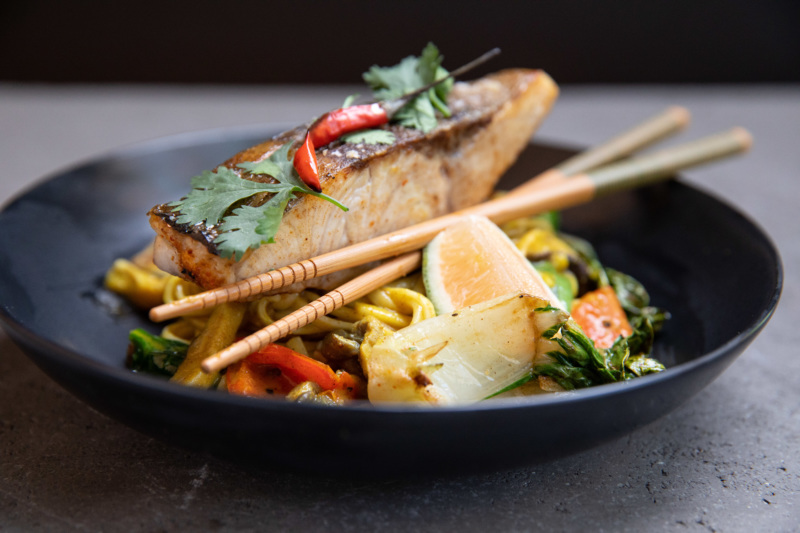
4. The menu ranges widely.
On a first visit, the 12-course omakase is a smart choice, spanning sushi selections both classic and less-so. On the traditional side, the snapper with yuzu kosho, wasabi, lemon zest, and green negi is a standout. The akami (a particular cut of tuna) dressed with nothing but smoked soy sauce is simple but stunning.
Then there’s miso soup, bobbing with tofu and avocado and seasoned with jalapeños, cilantro, and Tajin (there’s that L.A. twist). The salmon chicharron is a miniature cup of fried salmon skin filled with chunks of salmon and topped with roe, a creative spin on head-to-tail cookery. The spicy tuna, served on a crisp rice square square and drizzled with vegan eel sauce, shines a new light on a dish that is often bastardized beyond recognition. And some strange alchemy makes the seared salmon, dressed with housemade ponzu and dry miso powder, literally melt in your mouth.
Other options include a couple of large entrees (perhaps kanpachi coconut curry or miso salmon) as well as a half-dozen vegan sushi choices featuring bell peppers, avocado, eggplant, and whatever else might be in season. Sake, shochu, wine, and beer round out the beverage menu, along with spritzy non-alcoholic drinks.
5. The vibes go all day (and night)
The setup at Fiish is equally suited to popping in for a casual lunch, impressing someone on date night, or settling in alone at the counter for an omakase experience. Its transparency in design parallels its transparency in seafood sourcing. The large, minimalist spot (located in the former Hayden space) has a cheerful vibe and even amid the 100 or so seats in the dining area, the 12-seat sushi bar feels warm and intimate. With lots of wood, granite, and mood lighting, it’s a little bit serious, a little bit classy, and a whole lot of fun.
Elina Shatkin is a multimedia journalist, podcast producer and filmmaker. She is currently a producer for Good Food at KCRW and has previously worked at LAist/KPCC, L.A. Weekly, and The L.A. Times. Follow her here. Follow Resy, too.


